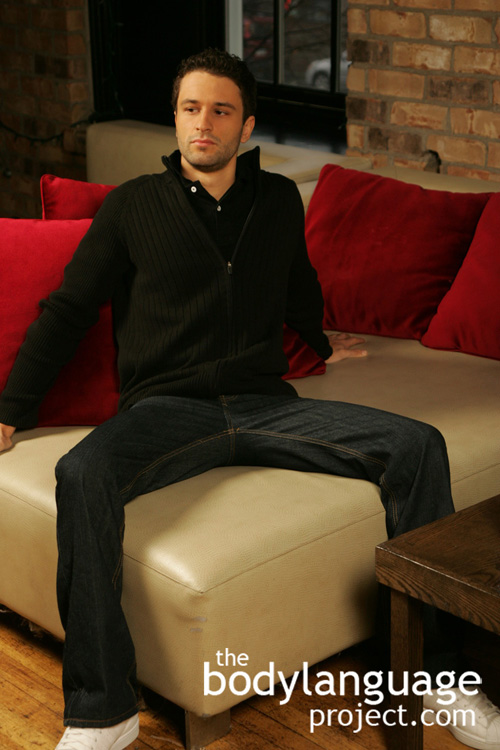Women in the workplace are always walking a thin line between their sexuality and authority. Women all know that their looks can be used to manipulate others around them, especially men, however physical attractiveness in the workplace has been repeatedly shown to lead others to dismiss women’s thoughts. However, one way women can combat this and still maintain their sexuality is as follows: sit with legs crossed leg over knee and have the high heel pointed horizontally at someone they wish to intimidate. Most dominant cues that work for men, such as the full body steeple, are ineffective when used by women. However, the heel is something men don’t have so it doesn’t come across as being a typically dominant male gesture. The heel acts like a dagger against its prey and neutralizes it. The posture shows assertiveness and that she is willing and able to emasculate men.
One sitting position women should particularly avoid is sitting with arms up and behind the head in the full steeple position as mentioned. This posture has the effect of putting the breasts on full display which counteracts any dominant aspects it might otherwise impart. Even having the legs crossed in the figure four looks odd when performed by women. A crotch display is not effective for women as it is for men, so it should be eliminated altogether. Hand steepling is another gender neutral dominance stance and can be used with effectiveness. Women want to pick up cues that suite their overall personality without putting people off. Assertive women often described as “bitchy” to others, usually because they take things too far. Women seeking powerful positions often think they need to go over-the-top because the fear being discounted. However, this isn’t so, and like men, need to balance being dominant and “mean” and demonstrating leadership qualities.




